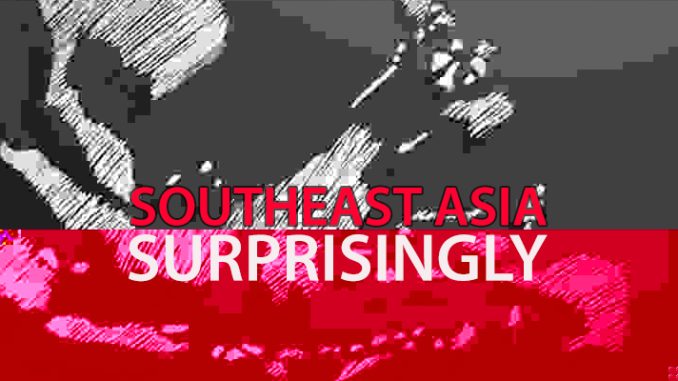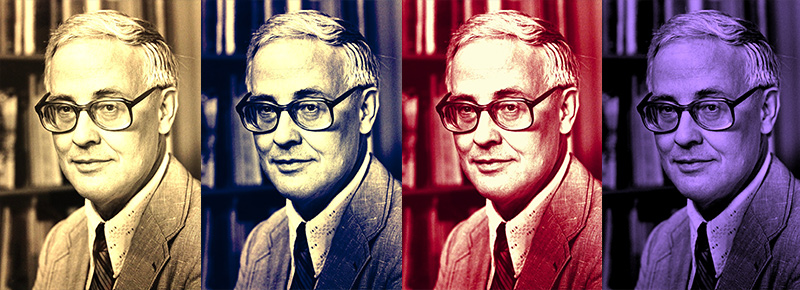
Benedict Anderson once remarked in an interview he gave to the journal Philippine Studies that “Southeast Asian universities don’t need to think about ‘area studies’ in any hegemonic sense (Singapore tries to do this, with laughable results), but they do need to have teachers and students who can do good work on ‘neighbors’ in ASEAN and in China-Japan-Korea, and perhaps also in Islamic studies (though here I am not optimistic). … Southeast Asian universities should do Southeast Asia area studies, but not in the American style.” 1 This statement immediately raises a challenging question that has not yet been reflected much by Southeast Asian Southeast Asianists 2: what forms should and could Southeast Asia area studies take in Southeast Asia that do not mechanically reproduce and complacently reenact the hegemonic American style area studies. This short piece aims to reflect on this question by examining the incalculable and unanticipatory forces of contingency and surprise that bring some scholars to a novel and unexpected engagement with Southeast Asia. This reflection hopes to suggest that contingency and surprise should be taken as conditions of possibility of other forms that Southeast Asia area studies in Southeast Asia could take. Before getting to the accounts of contingency and surprise proper, I offer briefly some points of consideration regarding Southeast Asian Studies in Southeast Asia.
As many commentators have noted, one clear advantage of practicing Southeast Asian Studies in Southeast Asia and by Southeast Asians is the linguistic competency of one or more Southeast Asian languages. This would lead to greater access to archival materials, historical resources, knowledge as well as other forms of inter-Southeast Asian connectivity. Ultimately and ideally, linguistic competency in one or more Southeast Asian languages is the condition of possibility for inter-Southeast Asian comparison. While there are manifold intellectual benefits coming with linguistic capability, this linguistic advantage does not automatically lead to a more robust reflection on how Southeast Asian knowledge should and could be produced from within the region, which I take to be the fundamental conceptual question for the existence of Southeast Asian studies as a field of study. Expanding Anderson, there are indeed more than one form of domination, oppression, and exploitation than Americanism transpiring within the region and the world at large, for example, national parochialism, state authoritarianism, epistemic orientalism, exploitative capitalism, international regulative apparatuses, and so on. These are pressing issues that have to be accounted for in the question of Southeast Asian knowledge production in addition to the matter of “style.”
For several decades, Southeast Asianists have made laudable attempts to offer provisional equipment, heuristics, and explanations for the question of Southeast Asian knowledge production, which also pertains to the issue of the specificity of Southeast Asian knowledge. To be sure, this is an open-ended question to which we should be skeptical of anyone who claims the possession of an ultimate answer. Two pioneering scholars of the field, Oliver Wolters and John Smail, come up with the theses of localization and autonomous history respectively to precisely address this question. Wolterian localization is a shorthand for the “something else outside the foreign materials.” Wolter understands “something else” to be “a local statement” that the host culture makes about itself. 3 But we do not have to read this “something else” in Southeast Asia as an equivalent of locality a la Wolters. We can conceive it as a radical alterity that can never be fully subsumed into any one interpretation of Southeast Asia. By autonomous history, Smail emphasizes that it is the autonomous “domestic” or “internal” history of Southeast Asia that does not assume the centrisms of any kind, both the Asia- and Europe-centric perspectives. Smail understands autonomous domestic history as history that is not dominated by any imposed (historiographical) views from above, ones that Smail collectively calls “the foreign relations approach.” He points out that this autonomous history from Southeast Asian perspective is “not a given.” It offers a “much more complex” account of Southeast Asia than the foreign relations approach would allow. 4 Using the Indonesian revolution as his case for writing autonomous history, Smail notes: “The Revolution becomes something much more than a quarrel or war between the Indonesians and the Dutch.” 5 Again, we encounter the trope of “something else” (Wolters) or “something more” (Smail) that Southeast Asia seems to offer for both scholars alike. This trope suggests that the resources to reanimate and make anew the study of Southeast Asia are inexhaustible. This is because there is always an other or an excess that resists a complete incorporation into any conceptualization of Southeast Asia. For our purposes, these are immanent Southeast Asia-specific resources that we can appropriate for assembling new forms of Southeast Asian studies in Southeast Asia.

I am connecting this trope of something else and something more to the forces of contingency and surprise because of their close affinities. It cannot be fully determined or preconceived in advanced what that “something else” or “something more” is or what effects they could bring to the study of Southeast Asia. In other words, the trope of something else and something more is contingent because of its indeterminacy. Benedict Anderson, one of the most significant figures of Southeast Asian studies, recounts in his memoir that he had “a stroke of luck” in that one day he was invited by his friend to take a temporary position as teaching assistant in Cornell’s department of government. While he was considering this offer, Anderson learned about the Indonesian civil wars, the Indonesian communist party (PKI), and CIA-backed anti-communist warlords from the news on the television and in the newspaper. He “decided to give Cornell a try” because “by chance, Cornell’s department of government employed a young professor, George Kahin, who was the world’s leading expert on contemporary Indonesia […] .” 6A scholar who became so influential in Southeast Asian studies drifts into this field because of luck and chance (which are forces of contingency). But once this player (or any other player) enters a field, the form of the field might forever change in a way not entirely predictable. Besides offering fascinating contingent life stories of other Southeast Asianists, Rafael points out that despite area studies in the US being initially motivated by the Cold War project of spreading US hegemony, “area studies has also provided critical spaces for generating opposition to imperial interventions, …, and for calling into question the reification of disciplinary boundaries in American universities […] .” 7 Rafael here argues that even as Southeast Asian studies is a product of a particular project and discourse, there can always be possibilities for counter-currents, divergences, and, as Rafael puts it, accidents (the “something else” and “something more”) that might open up Southeast Asian studies to other possible futures. This condition of openness, I have tried to argue, is made possible by the forces of contingency and surprise. “The point is that,” Anderson reminds us in the last section of his memoir, “we have not yet managed to eliminate chance and accident, let alone luck, in our everyday thinking.” 8 In a very compressed manner, I have tried to demonstrate that there is always contingent and the surprising “something else” and “something more” in Southeast Asia that offers us resources to interminably assemble new forms of Southeast Asian studies.
By way of ending, I wish to honor my late teacher Jeffrey Hadler (1968-2017), a Minangkabau specialist, by briefly offering an anecdote about his surprising discovery of the parafictional quality of Surat-Surat Malam (‘Night Letters’), a collection of letters written by an Indonesian/Minang philosopher and artist Nashar (1928-1994). After encountering Night Letters in the Padang paper Singgalang in the 1990s, Hadler was led to believe that Nashar’s letters were published as open columns in a newspaper. Yet, after years of hunting down Nashar’s works and interviewing Nashar’s family members and friends, Hadler came to the surprising conclusion that the “letters” were “never sent, never published, and first appeared as a putative compilation in late 1976—first in the journal Budaya Jaya 9.101 (October 1976), and then again two months later as the more famous book.” 9 With this exciting new discovery, Hadler began to read the Night Letters as a parafictional artwork and a false archive that grapples with the Suharto state’s “negation of history and repression of direct political discourse” as well as with the contesting notions of authenticity, archive, and truth. 10 This anecdote is one way of saying that there are limitless possibilities undertaking Southeast Asian studies and producing Southeast Asian knowledge, when one might identify that “something else” and “something more,” here represented by the surprising discovery of the subtle and illusive nature of the Night Letters. If scholars of Southeast Asia could identify the “something else” and “something more” in their own fields, new forms of Southeast Asian studies in Southeast Asia would be on the verge of emergence.
Thiti Jamkajornkeiat
Ph.D. Student in South and Southeast Asian Studies with a Designated Emphasis in Critical Theory, University of California-Berkeley. His academic interests include modern Indonesian intellectual history, critical theory, Marxism, postcolonial theory, third worldism, and the question of inter-Asian comparison.
YAV: Kyoto Review of Southeast Asia, Issue 21, April 2017

Notes:
- Aguilar, Filomeno et al., 2011, “Benedict Anderson, Comparatively Speaking: On Area Studies, Theory, and ‘Gentlemanly’ Polemics – an Interview,” Philippine Studies 59, 1: 110-11. ↩
- This is to distinguish Southeast Asianist (a person who studies Southeast Asia) who identifies oneself with the region (Southeast Asian Southeast Asianist) from non-Southeast Asian Southeast Asianist. This distinction has been brought into sharp relief in Heryanto, Ariel, 2002, “Can There Be Southeast Asians in Southeast Asian Studies?” Moussons 5: 3-30. ↩
- Wolters, Oliver W., 1999, History, Culture, and Region in Southeast Asian Perspectives, Ithaca, N.Y.: Cornell Southeast Asia Program; Singapore: The Institute of Southeast Asian Studies, 57, 173. ↩
- Smail, John R.W., 1961, “On the Possiblity of an Autonomous History of Modern Southeast Asia,” Journal of Southeast Asian History 2, 2 (Jul): 94-102 (Sec. 5-7). ↩
- Ibid., 98. ↩
- Anderson, Benedict, 2016, A Life Beyond Boundaries, London and New York: Verso, 24. ↩
- Rafael, Vicente L., 1999, “Regionalism, Area Studies, and the Accidents of Agency,” The American Historical Review 104, 4 (Oct): 1209. ↩
- Anderson, A Life Beyond Boundaries, 184. ↩
- Hadler, Jeffrey, 2014, “Night Letters: The Ambiguous Archive of Soeharto’s New Order (1968-1977),” Proceedings of the Kyoto-Berkeley Seminar on Indonesia, Kyoto University, 10 January, The Center for Southeast Asian Studies, Kyoto University “Toward Sustainable Humanosphere in Southeast Asian Studies” Research Program and the Center for Southeast Asian Studies, University of California-Berkeley, 58. ↩
- Ibid., 67. ↩

they do need to have teachers and students who can do good work on ‘neighbors’ in ASEAN and in China-Japan-Korea, and perhaps also in Islamic studies (though here I am not optimistic). … Southeast Asian universities should do Southeast Asia area studies, but not in the American style.”
The best statement I ever have seen, SE Asia is not ready for a real SE Asia study due to the corrupt gov’t, the twist and turn education system under control of state mafias. The textbooks have been spinning around for the century. The true stories are buried under the rugs.
SE Asia population is large approx. 440 million, however, poor education system kept them awkward and behind. There is few institution really invest in SE Asia area. And the American style is way off from the reality.
Yes, the need to study of this are is tremendous needed, perhaps the Chinese may be interested.
Thank you for your comment.